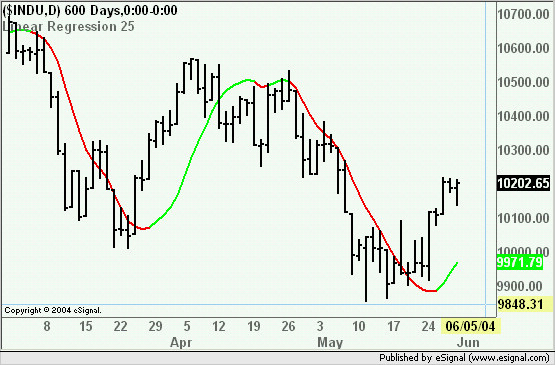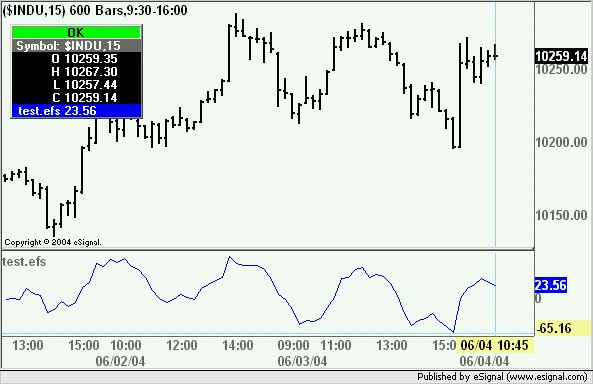Received via PM
I would like to know esignal formula/ function call which gives previous bar information (i.e. High, Low, close) and MA based on previous bar. I would like to use this information for a MA crossover formula
As far as the OHLCVOi values are concerned you would use for example close(-1) to get the prior bar's close value or high(-2) to get tyhe high of two periods ago (the current bar is always indexed to 0).
With regards to indicators it will depend on how they are coded. If for example you were using the builtinMA.efs that is availble in the Builtin subfolder of Formulas then you would write
study.getValue(MAStudy.MA,-1)
to retrieve the prior bar's MA value.
Hope this helps
Alex
I would like to know esignal formula/ function call which gives previous bar information (i.e. High, Low, close) and MA based on previous bar. I would like to use this information for a MA crossover formula
As far as the OHLCVOi values are concerned you would use for example close(-1) to get the prior bar's close value or high(-2) to get tyhe high of two periods ago (the current bar is always indexed to 0).
With regards to indicators it will depend on how they are coded. If for example you were using the builtinMA.efs that is availble in the Builtin subfolder of Formulas then you would write
study.getValue(MAStudy.MA,-1)
to retrieve the prior bar's MA value.
Hope this helps
Alex


Comment